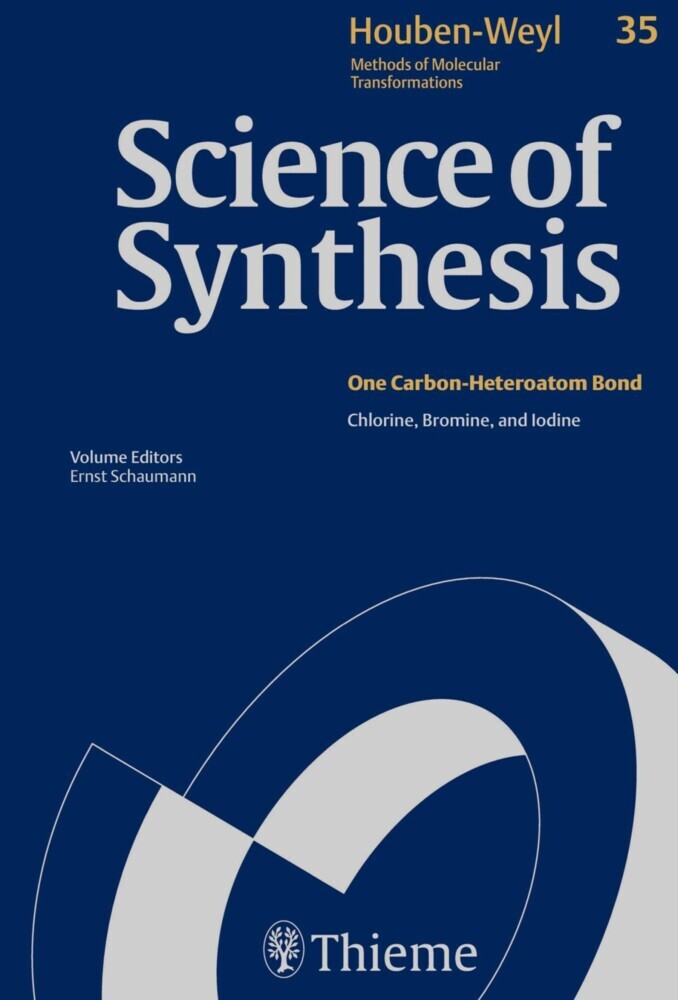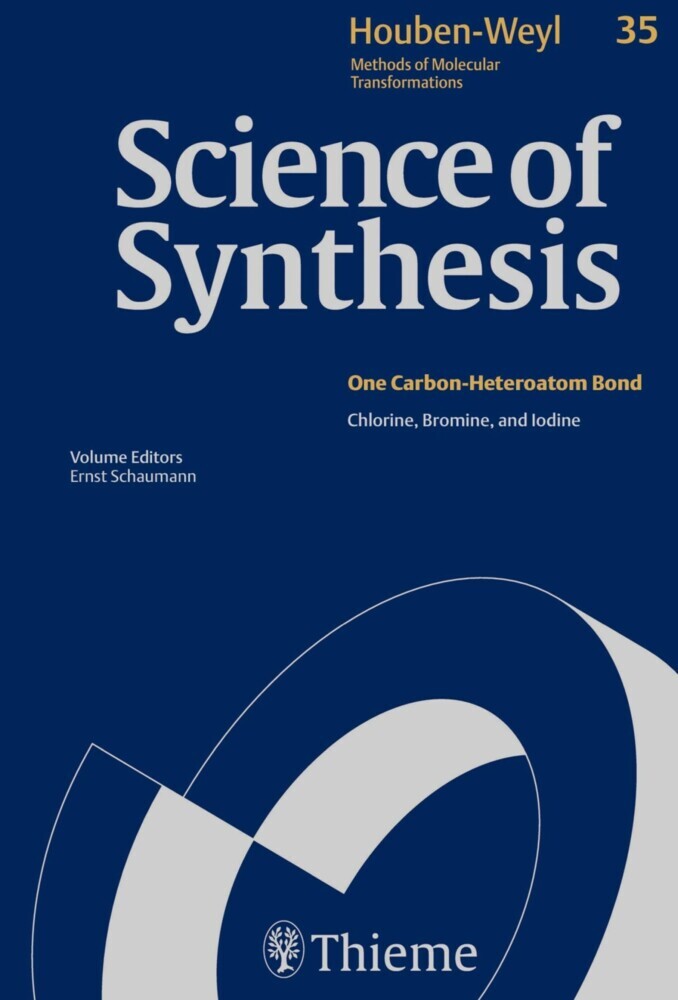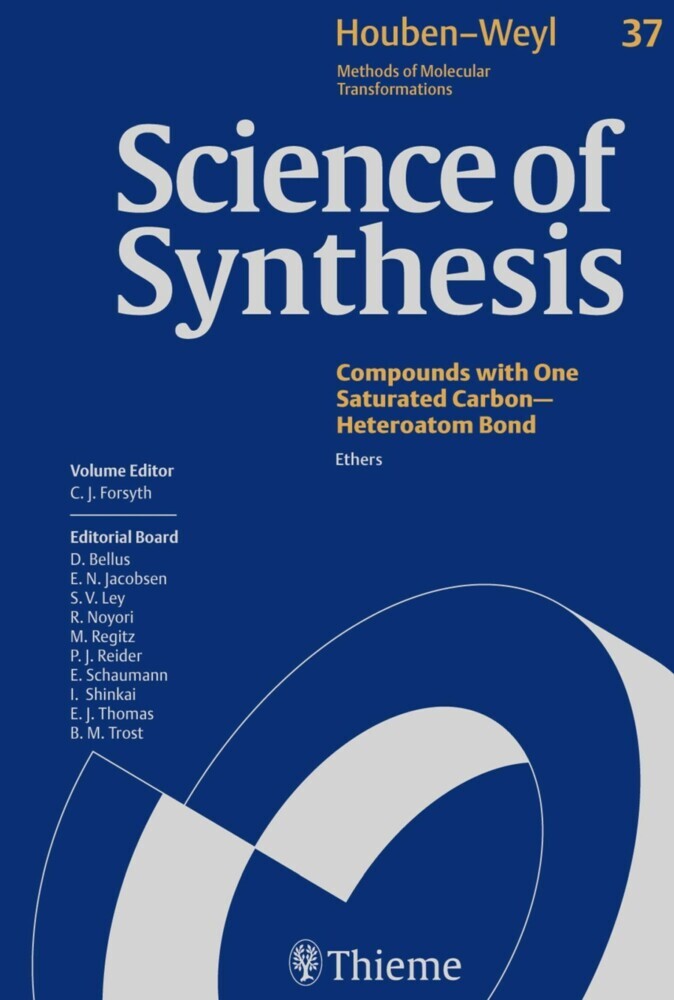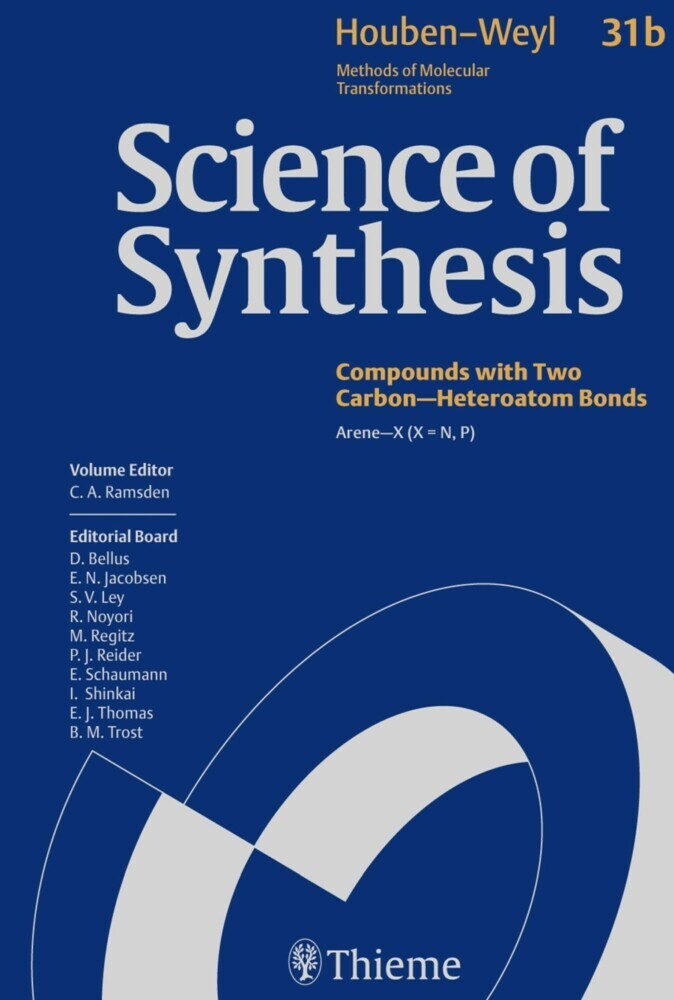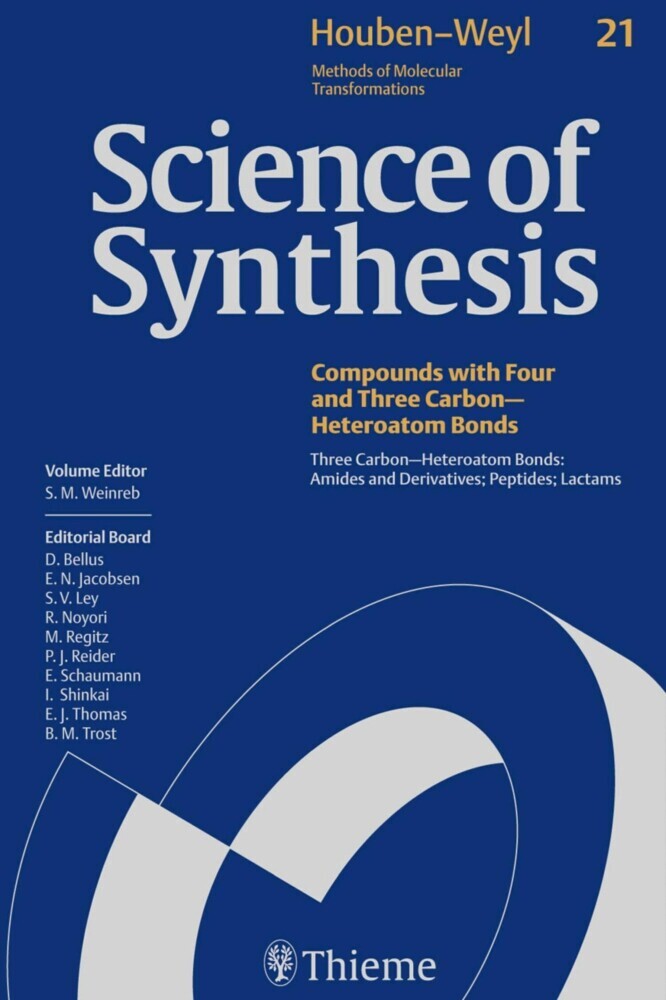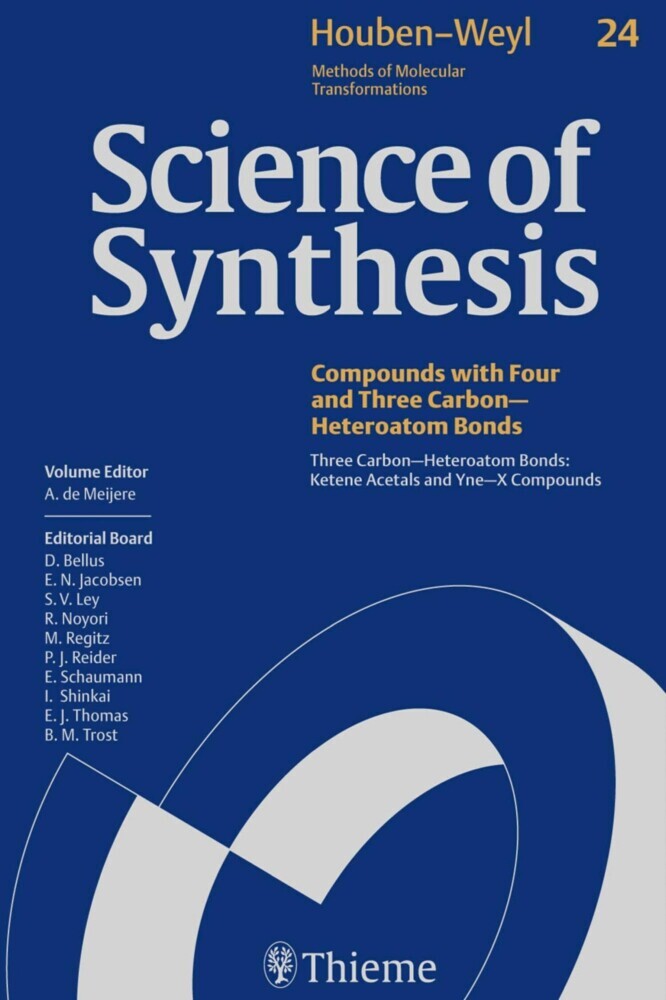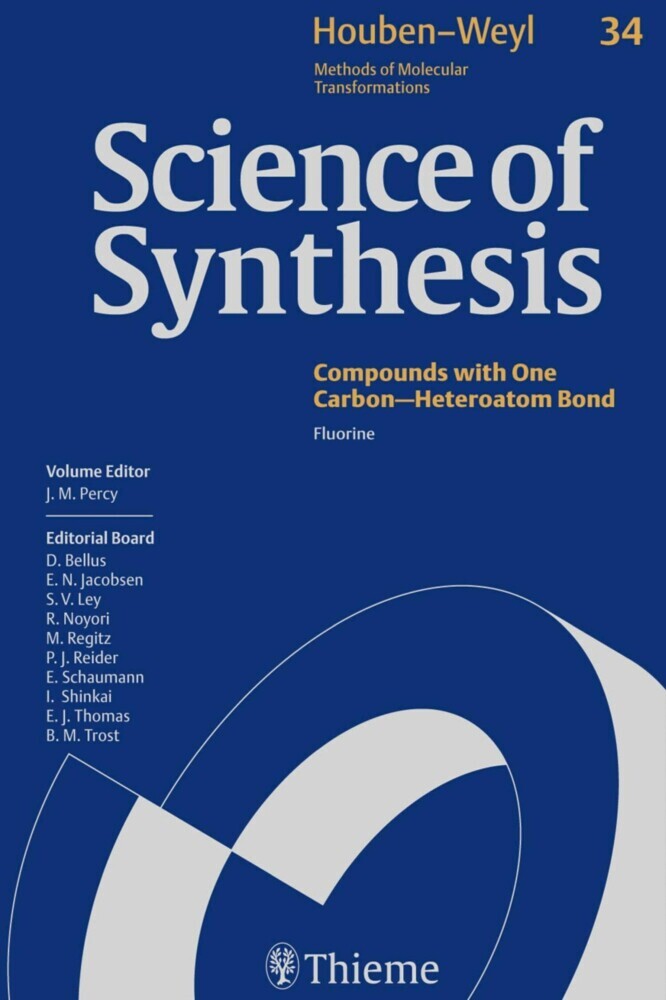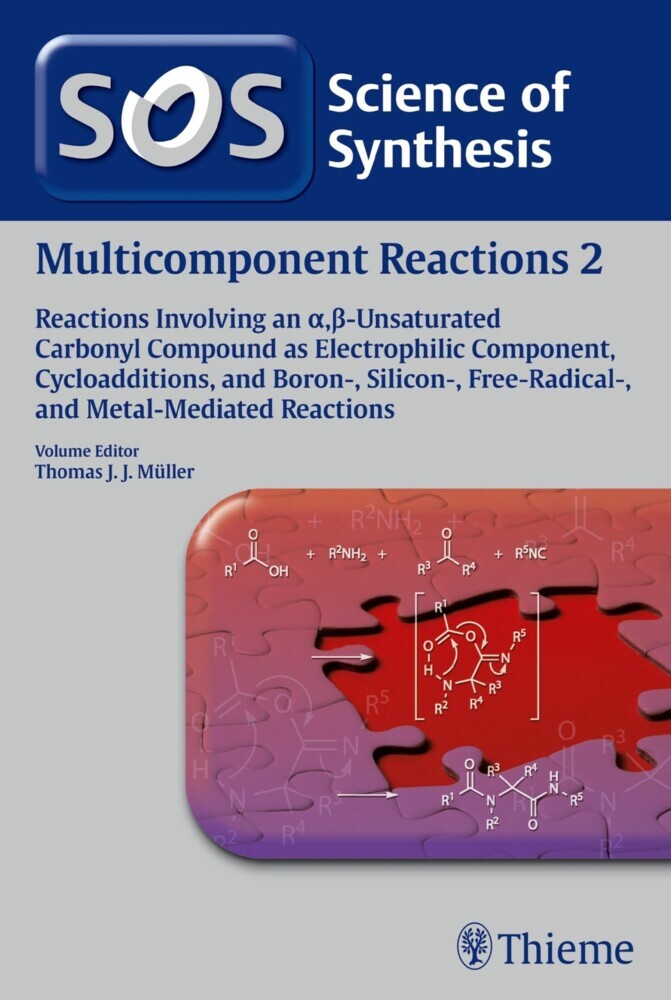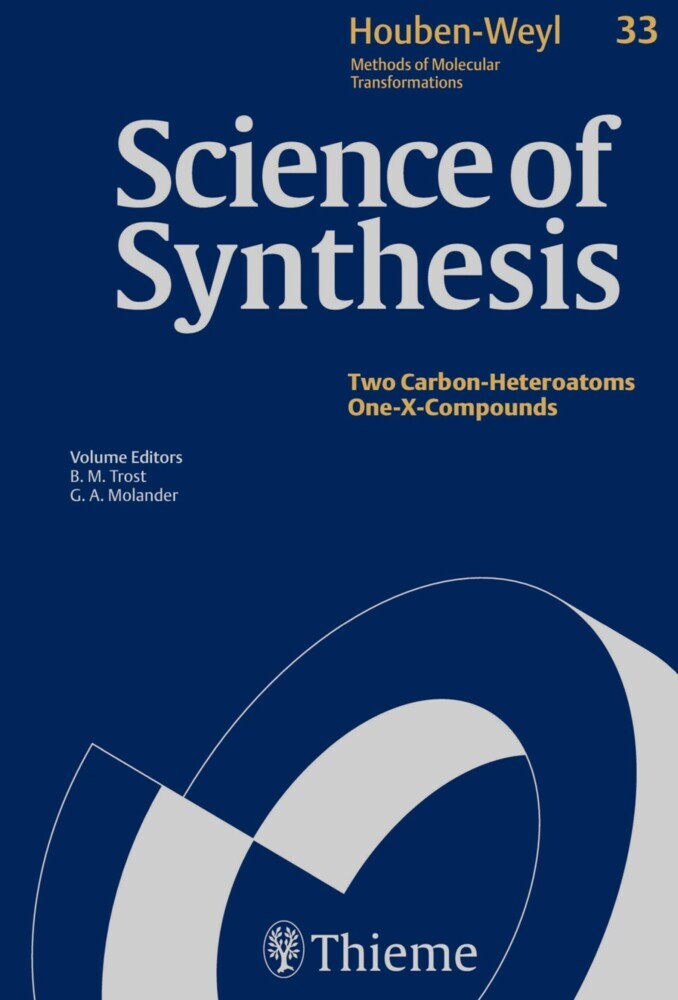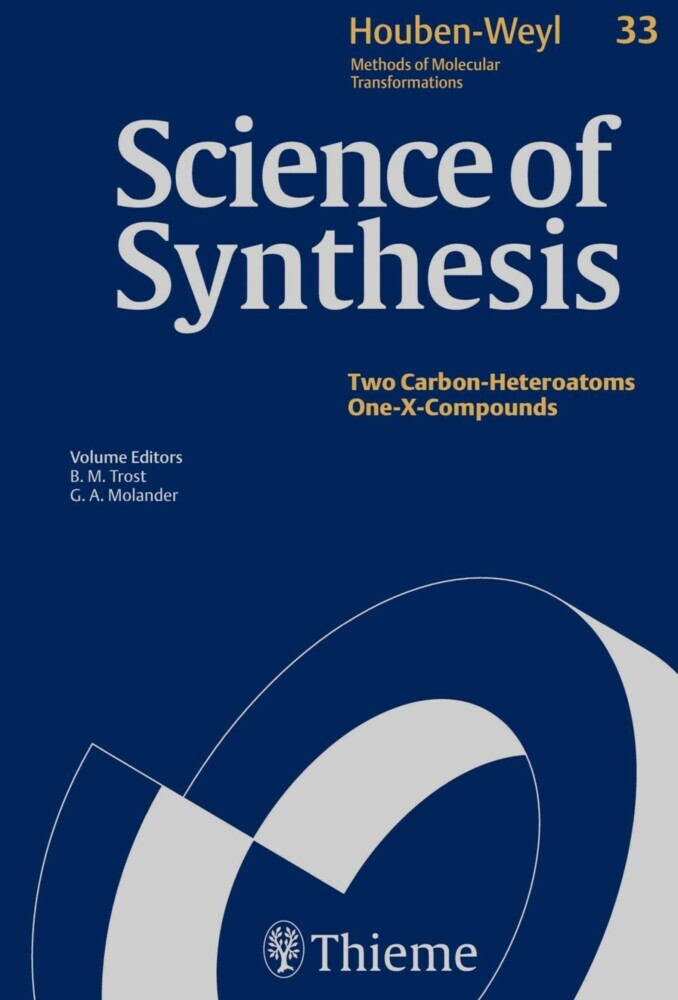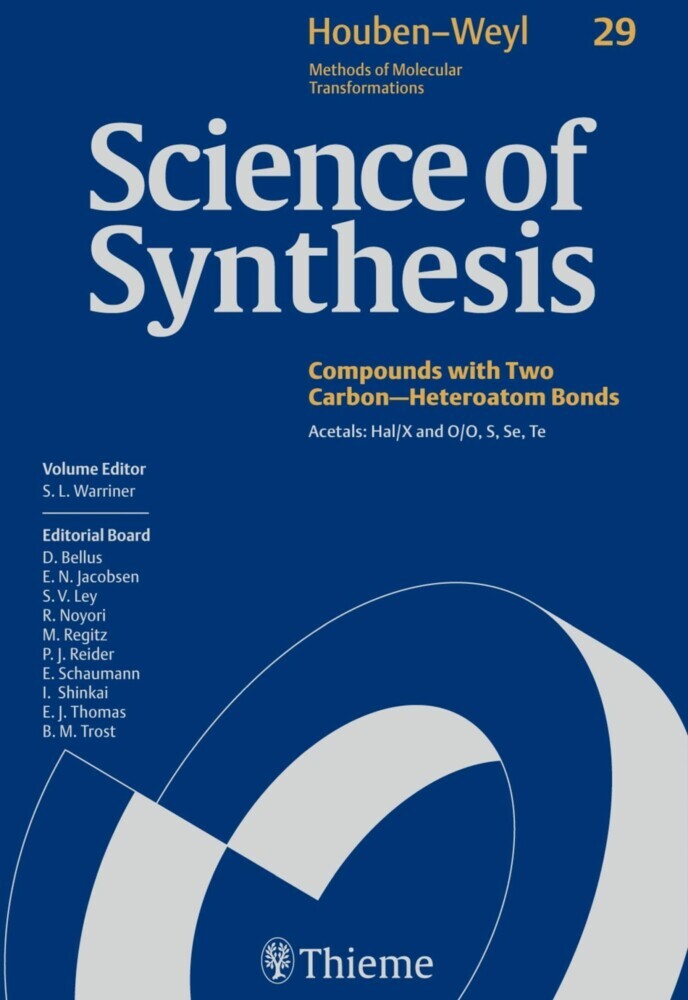Science of Synthesis: Houben-Weyl Methods of Molecular Transformations Vol. 35
Chlorine, Bromine, and Iodine
Science of Synthesis: Houben-Weyl Methods of Molecular Transformations Vol. 35
Chlorine, Bromine, and Iodine
Science of Synthesis: Houben-Weyl Methods of Molecular Transformations is the entirely new edition of the acclaimed reference series Houben-Weyl, the standard synthetic chemistry resource since 1909. This new edition is published in English and will comprise 48 volumes published between the years 2000 and 2008.
Science of Synthesis is a quality reference work developed by a highly esteemed editorial board to provide a comprehensive and critical selection of reliable organic and organometallic synthetic methods. This unique resource is designed to be the first point of reference when searching for a synthesis strategy.
- Contains the expertise of presently 400 leading chemists worldwide
- Critically evaluates the preparative applicability and significance of the synthetic methods
- Discusses relevant background information and provides detailed experimental procedures
For full information on the Science of Synthesis series, visit the Science of Synthesis Homepage
1;Science of Synthesis - Volume 35: Chlorine, Bromine, and Iodine;1 1.1;Title page;3 1.2;Imprint;5 1.3;Preface;6 1.4;Volume Editor's Preface;8 1.5;Overview;10 1.6;Table of Contents;16 1.7;Introduction;40 1.8;35.1 Product Class 1: One Saturated Carbon--Chlorine Bond;54 1.8.1;35.1.1 Product Subclass 1: Chloroalkanes;54 1.8.1.1;35.1.1.1 Synthesis by Substitution of Hydrogen;58 1.8.1.1.1;35.1.1.1.1 Alkanes and Cycloalkanes;60 1.8.1.1.1.1;35.1.1.1.1.1 Method 1: Reactions with Molecular Chlorine;60 1.8.1.1.1.2;35.1.1.1.1.2 Method 2: Reactions with Sulfuryl Chloride;62 1.8.1.1.1.3;35.1.1.1.1.3 Method 3: Reactions with Trichloromethanesulfonyl Chloride;63 1.8.1.1.1.4;35.1.1.1.1.4 Method 4: Reactions with Trichloromethanesulfenyl Chloride;64 1.8.1.1.1.5;35.1.1.1.1.5 Method 5: Chlorination Reagents Containing an O--Cl Bond;65 1.8.1.1.1.5.1;35.1.1.1.1.5.1 Variation 1: tert-Butyl Hypochlorite as Chlorine-Atom Donor;65 1.8.1.1.1.5.2;35.1.1.1.1.5.2 Variation 2: Chlorination with Chlorine Monoxide;65 1.8.1.1.1.6;35.1.1.1.1.6 Method 6: Reactions with Chloroamines;66 1.8.1.1.1.7;35.1.1.1.1.7 Method 7: Chlorination with Phosphorus Pentachloride;67 1.8.1.1.1.8;35.1.1.1.1.8 Method 8: Chlorination Reagents Containing an I--Cl Bond;67 1.8.1.1.1.8.1;35.1.1.1.1.8.1 Variation 1: (Dichloroiodo)benzene as Chlorine-Atom Donor;67 1.8.1.1.1.8.2;35.1.1.1.1.8.2 Variation 2: Iodine Trichloride as Chlorine-Atom Donor;68 1.8.1.1.1.9;35.1.1.1.1.9 Method 9: Chlorination with Carbon Tetrachloride in the Presence of Transition-Metal Carbonyl Complexes;68 1.8.1.1.2;35.1.1.1.2 Haloalkanes and Halocycloalkanes;69 1.8.1.1.2.1;35.1.1.1.2.1 Method 1: Reactions with Molecular Chlorine;69 1.8.1.1.3;35.1.1.1.3 Alcohols;70 1.8.1.1.3.1;35.1.1.1.3.1 Method 1: Reactions with Molecular Chlorine;70 1.8.1.1.3.2;35.1.1.1.3.2 Method 2: Reactions with Chloroamines;71 1.8.1.1.4;35.1.1.1.4 Ethers;71 1.8.1.1.4.1;35.1.1.1.4.1 Method 1: Reactions with Molecular Chlorine;71 1.8.1.1.4.2;35.1.1.1.4.2 Method 2: Reactions with Hypohalites;73 1.8.1.1.4.3;35.1.1.1.4.3 Method 3: Chlorination with (Dichloroiodo)arenes;74 1.8.1.1.4.4;35.1.1.1.4.4 Method 4: Reactions with Phosphorus Pentachloride;75 1.8.1.1.5;35.1.1.1.5 Aldehydes;75 1.8.1.1.5.1;35.1.1.1.5.1 Method 1: Reactions with Sulfuryl Chloride;75 1.8.1.1.5.2;35.1.1.1.5.2 Method 2: Reactions with N-Chlorosuccinimide;76 1.8.1.1.6;35.1.1.1.6 Ketones;76 1.8.1.1.6.1;35.1.1.1.6.1 Method 1: Reactions with Molecular Chlorine;76 1.8.1.1.6.2;35.1.1.1.6.2 Method 2: Reactions with Manganese(III) Acetate and Lithium Chloride;77 1.8.1.1.6.3;35.1.1.1.6.3 Method 3: Chlorination with Sulfuryl Chloride;78 1.8.1.1.7;35.1.1.1.7 Carboxylic Acids and Derivatives;78 1.8.1.1.7.1;35.1.1.1.7.1 Method 1: Reactions with Molecular Chlorine;78 1.8.1.1.7.2;35.1.1.1.7.2 Method 2: Reactions with Sulfuryl Chloride;80 1.8.1.1.7.3;35.1.1.1.7.3 Method 3: Reactions with Chloroamines;81 1.8.1.1.8;35.1.1.1.8 Amines;82 1.8.1.1.8.1;35.1.1.1.8.1 Method 1: Reactions with Molecular Chlorine;82 1.8.1.2;35.1.1.2 Synthesis by Substitution of Metals;86 1.8.1.2.1;35.1.1.2.1 Method 1: Synthesis from Organo-Group 15 Derivatives;86 1.8.1.2.2;35.1.1.2.2 Method 2: Synthesis from Trialkylboranes;86 1.8.1.3;35.1.1.3 Synthesis by Substitution of Carbon Functionalities;88 1.8.1.3.1;35.1.1.3.1 Method 1: Decarbonylation of Acyl Chlorides;88 1.8.1.3.2;35.1.1.3.2 Method 2: Chlorodecarboxylation of the Heavy Metal Salts of Carboxylic Acids;88 1.8.1.3.3;35.1.1.3.3 Method 3: Chlorodecarboxylation of Carboxylic Acids by Lead(IV) Acetate;89 1.8.1.3.3.1;35.1.1.3.3.1 Variation 1: Chlorodecarboxylation in the Presence of Lithium Chloride;90 1.8.1.3.3.2;35.1.1.3.3.2 Variation 2: Chlorodecarboxylation in the Presence of N-Chlorosuccinimide;91 1.8.1.3.4;35.1.1.3.4 Method 4: Chlorodecarboxylation of 1-(Acyloxy)pyridine-2(1H)-thiones;92 1.8.1.4;35.1.1.4 Synthesis by Substitution of Other Halogens;98 1.8.1.4.1;35.1.1.4.1 Method 1: Substitution of Bromine;98 1.8.1.4.2;
| ISBN | 9783131721211 |
|---|---|
| Artikelnummer | 9783131721211 |
| Medientyp | E-Book - PDF |
| Copyrightjahr | 2014 |
| Verlag | Georg Thieme Verlag KG |
| Umfang | 850 Seiten |
| Sprache | Englisch |
| Kopierschutz | Digitales Wasserzeichen |

